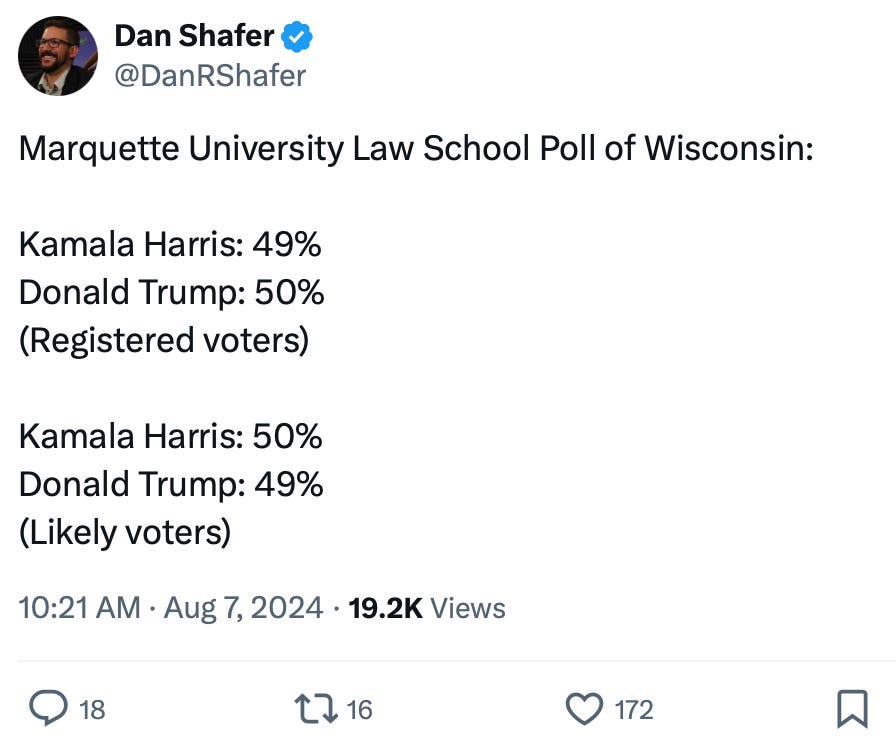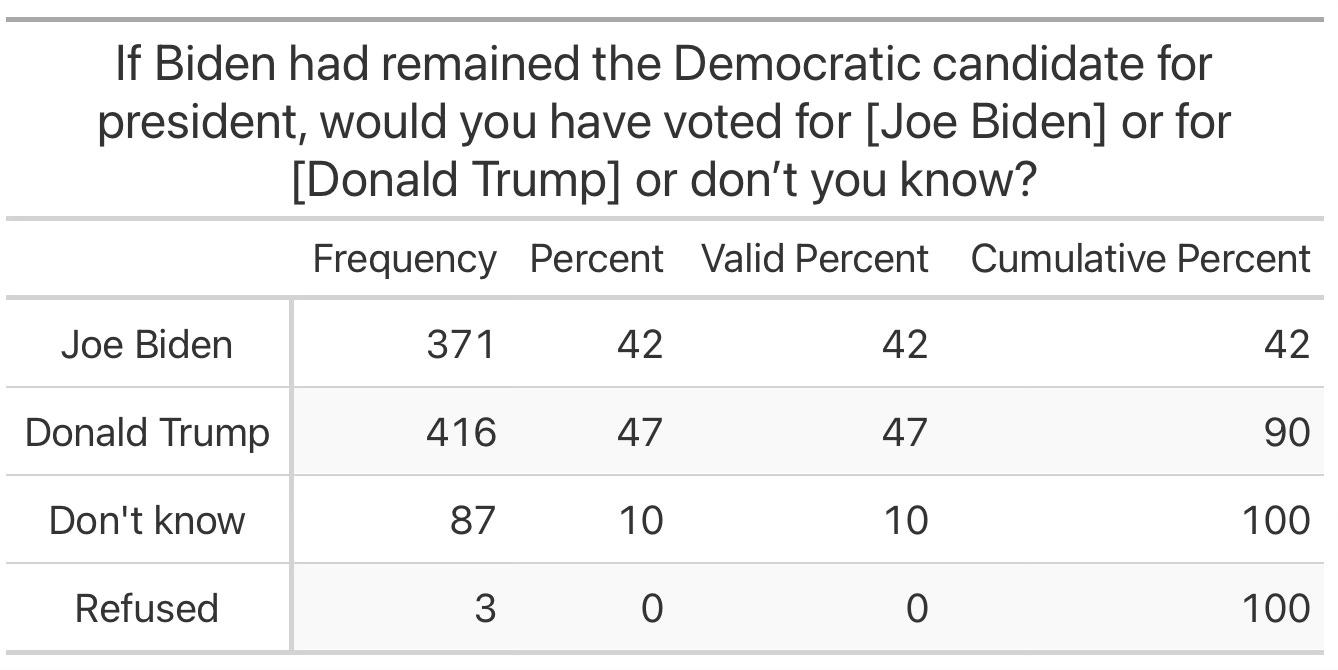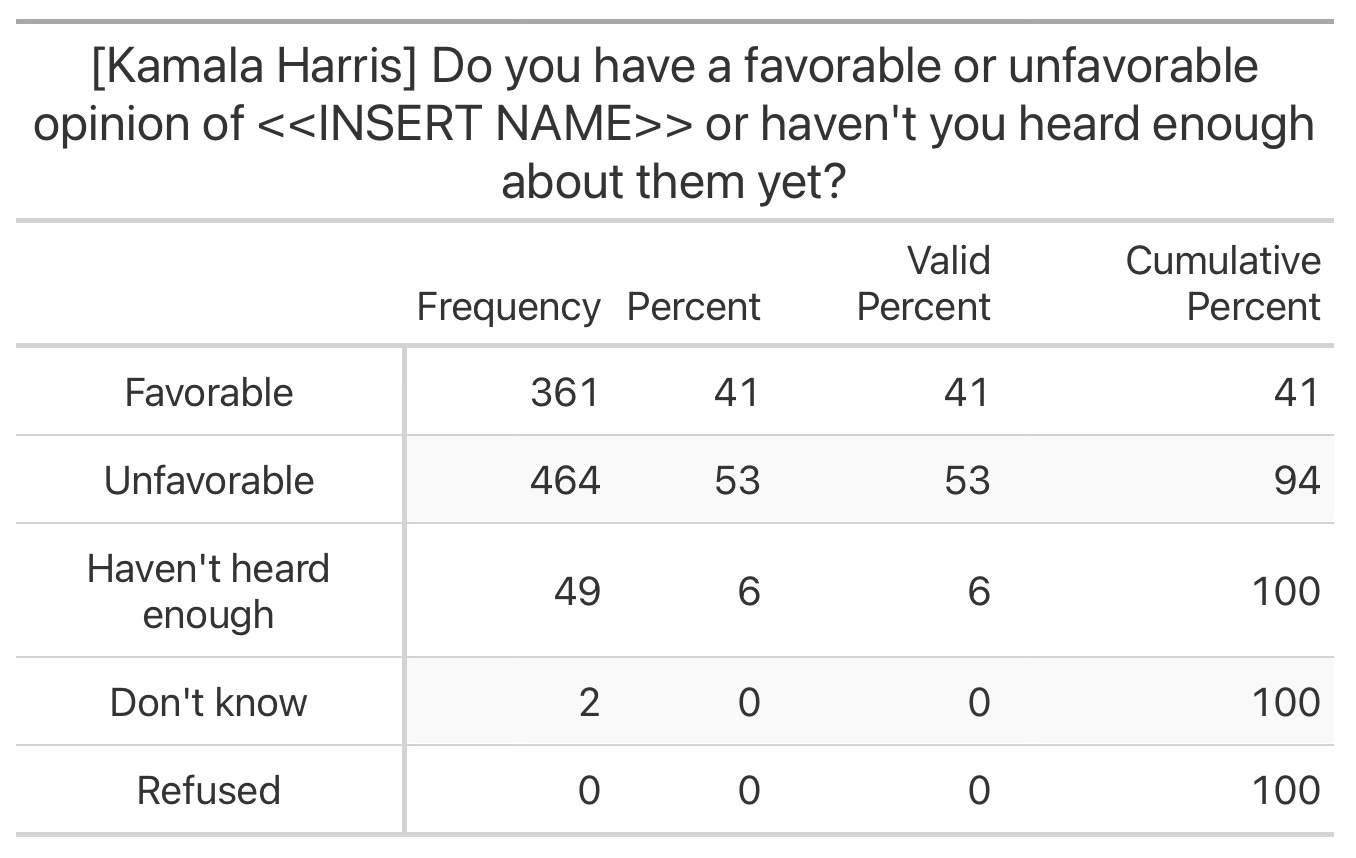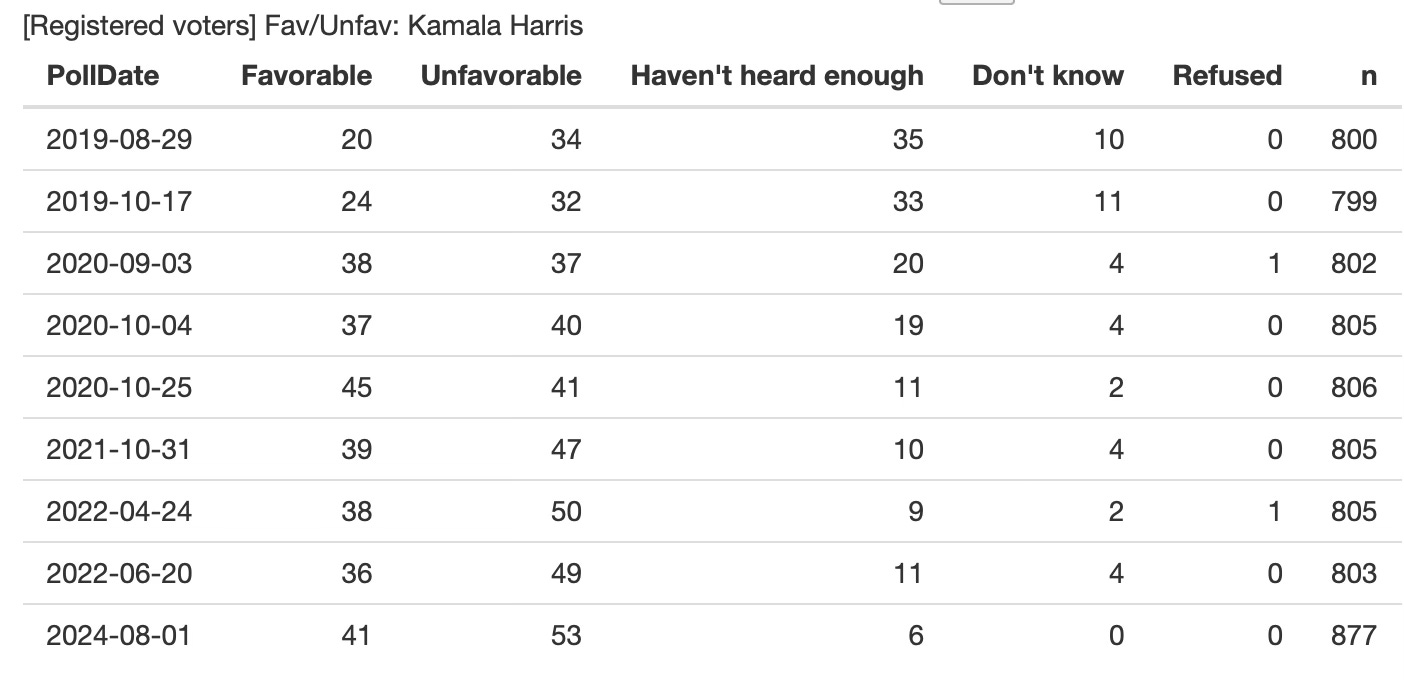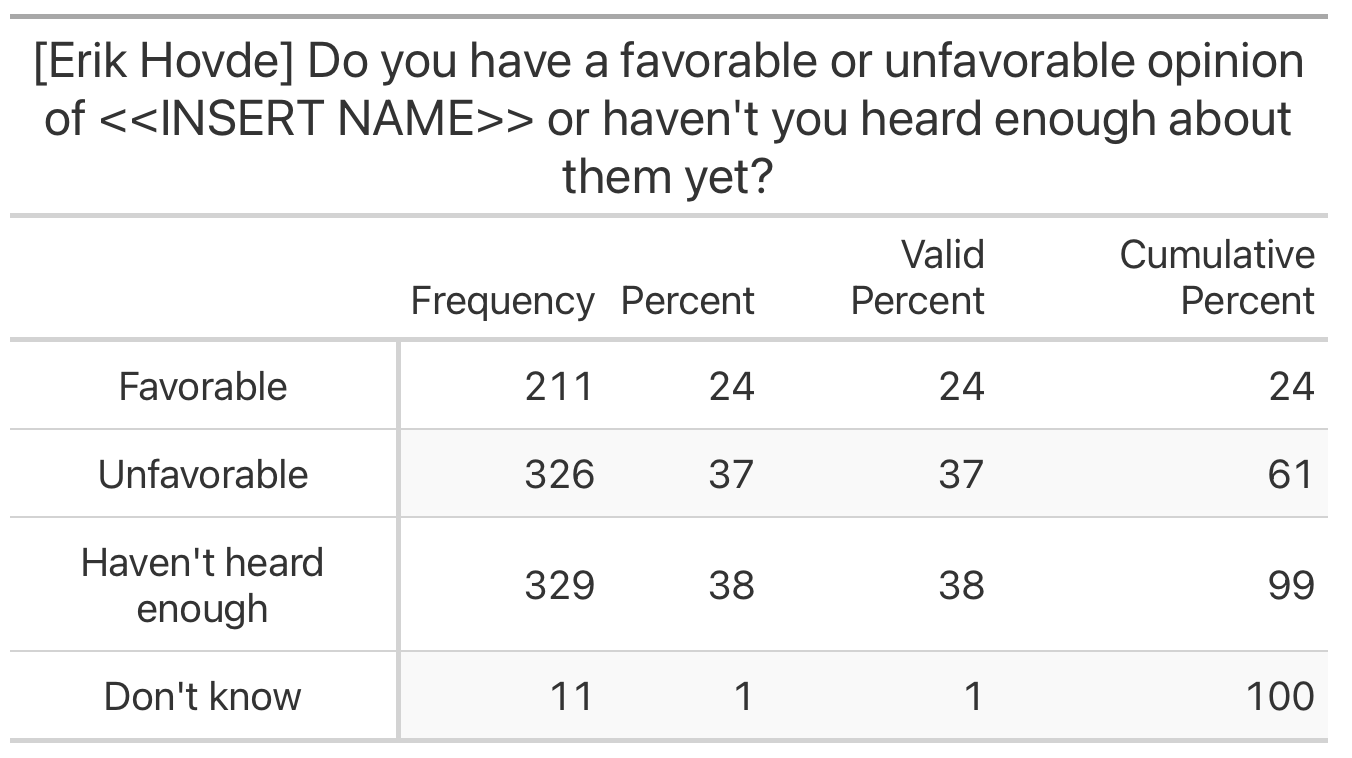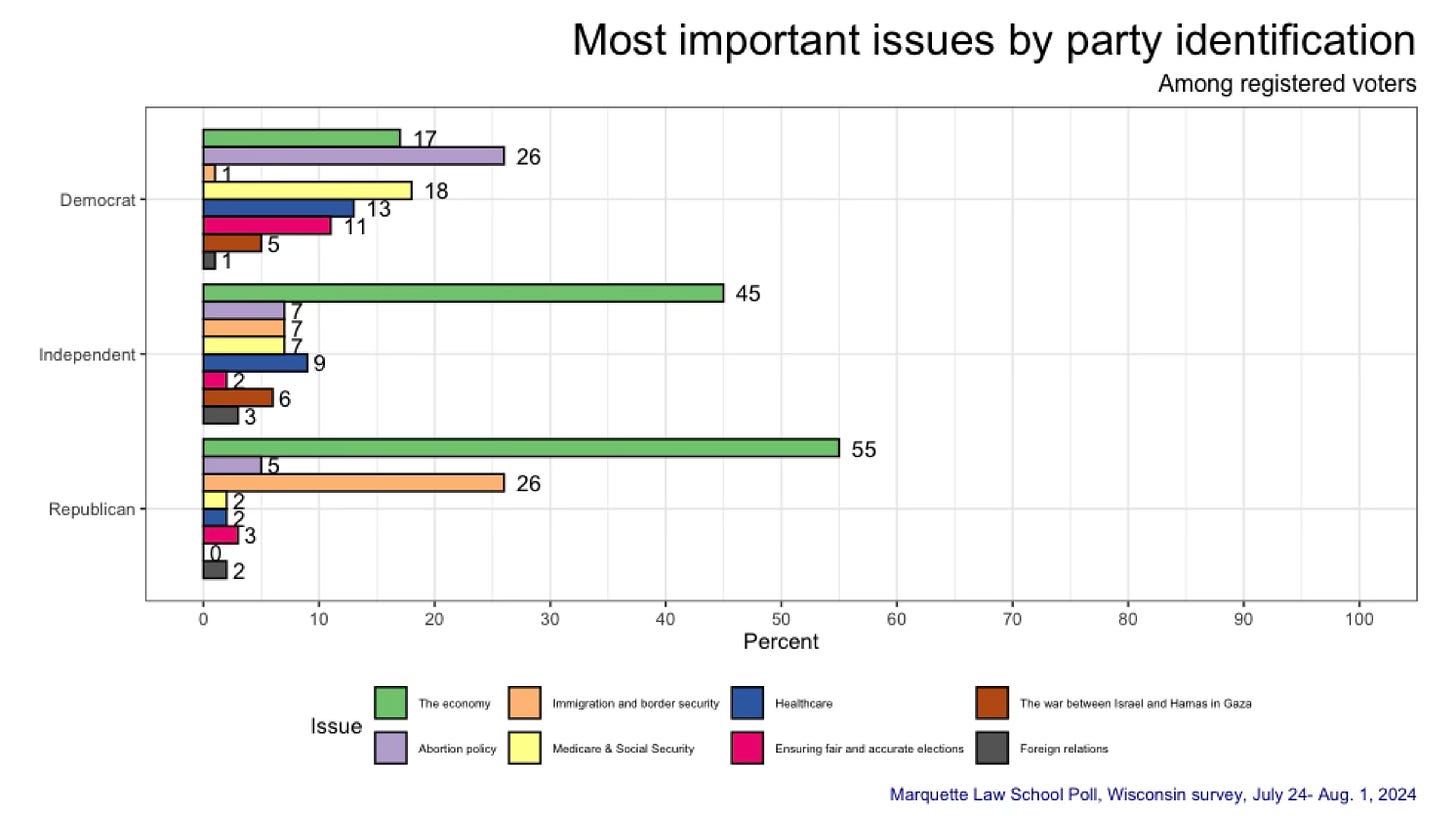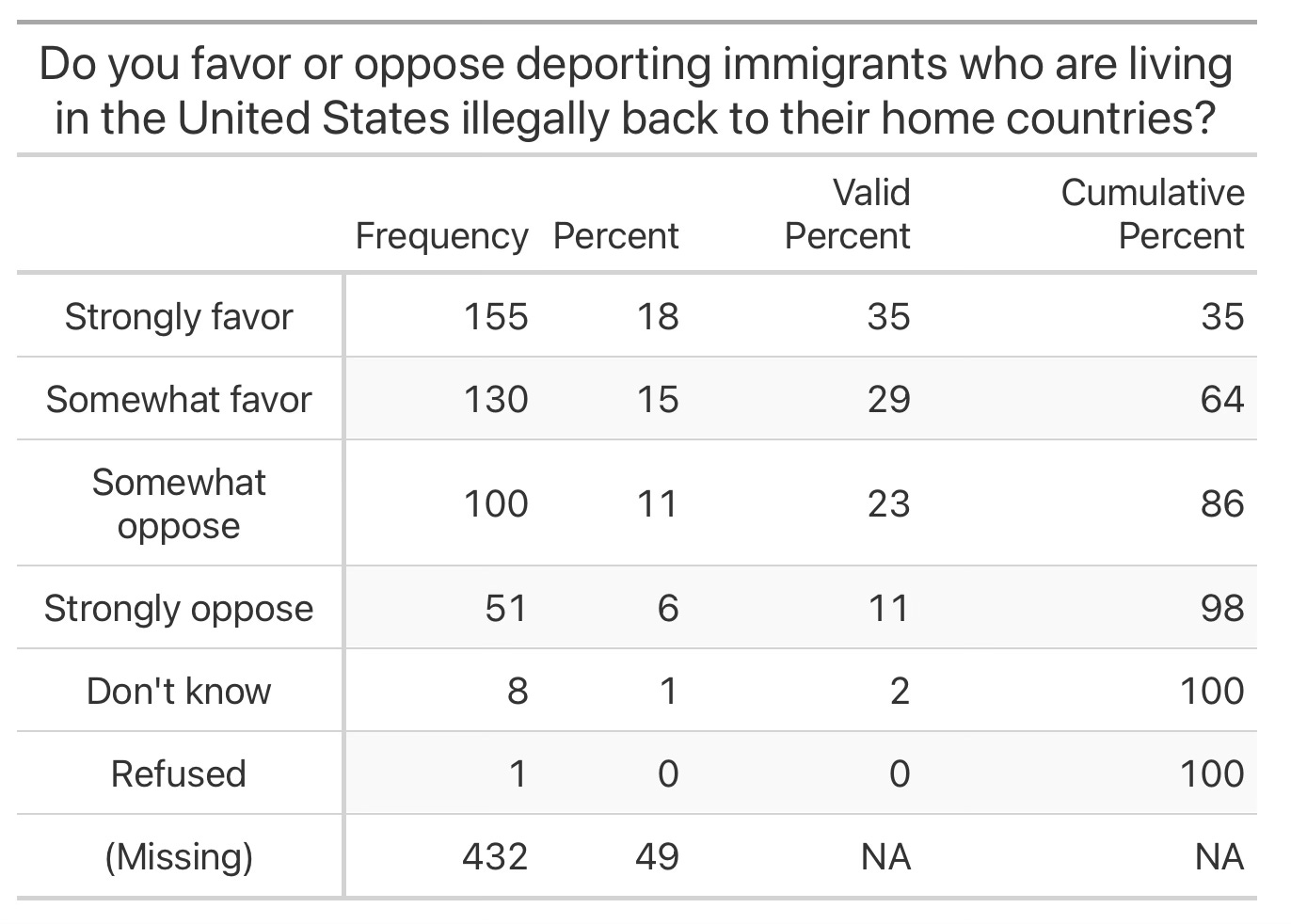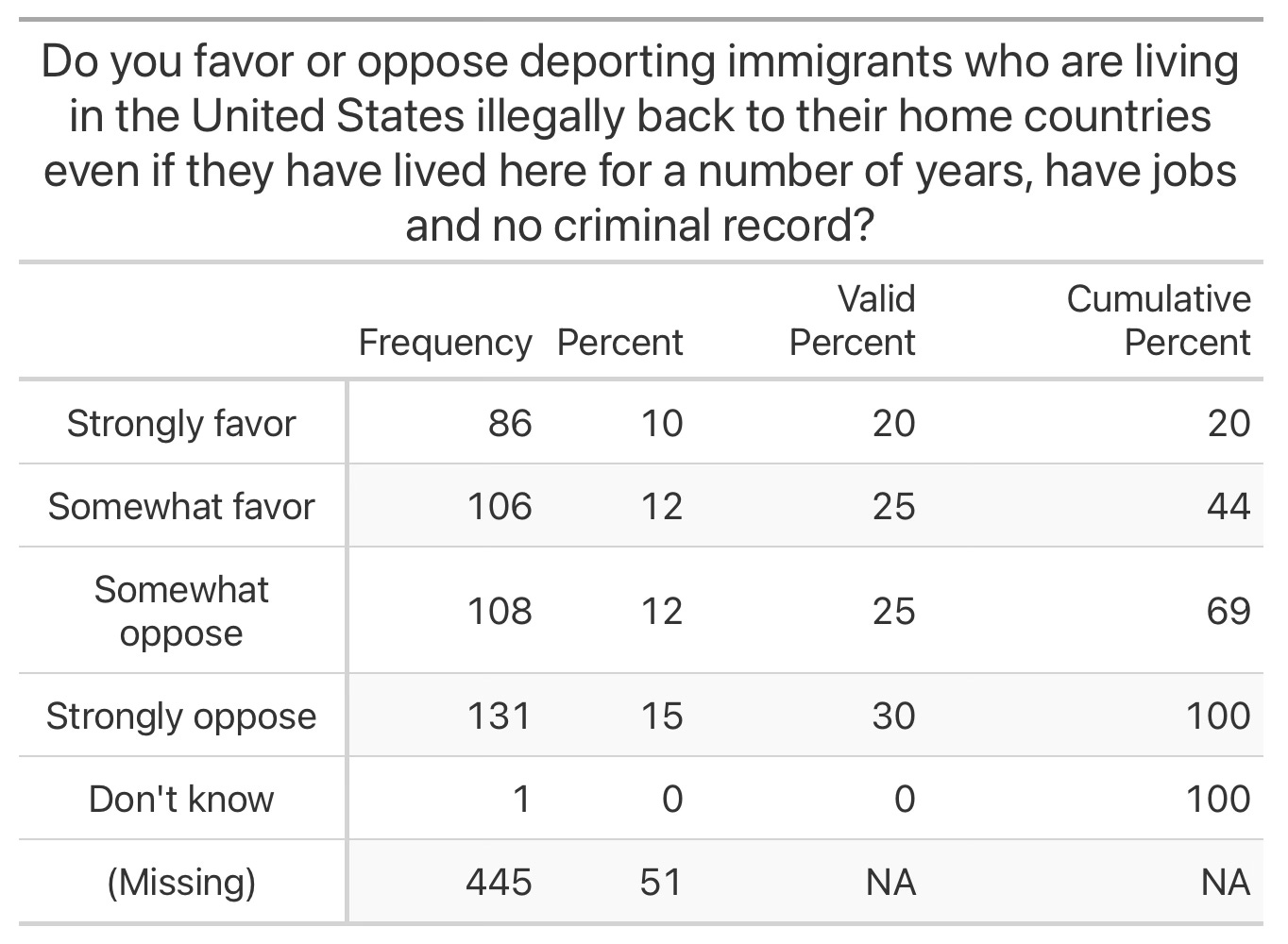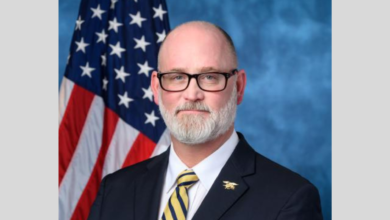With Kamala Harris as nominee, Democratic enthusiasm rises in Wisconsin

The Recombobulation Area is a thirteen-time Milwaukee Press Club award–winning weekly opinion column and online publication founded by longtime Milwaukee journalist Dan Shafer. Learn more about it here.

The Marquette University Law School Poll is the gold standard of measuring public opinion in Wisconsin, so here at The Recombobulation Area, we take a close look at each new poll. See all of our previous breakdowns here.
The last time a new edition of the Marquette University Law School Poll was released was on Wednesday, June 26. That was one day before the presidential debate between Joe Biden and Donald Trump. I suppose you could say quite a bit has happened since then.
The RNC happened in Milwaukee. Donald Trump survived an assassination attempt. Kamala Harris is now the nominee for the Democratic Party.
And yet, after this discombobulating and remarkable month in American politics, the race at the top of the ticket in Wisconsin remains the same. The swingiest swing state in the nation is still a toss-up.
But as always, there’s much more information beneath the surface of this poll. So, let’s dive in.
(Find all of the data from the poll, along with timing and methodology information here and here.)
Much has changed in this race at large, and it’s clear that going from Joe Biden to Kamala Harris has improved Democrats’ chances in Wisconsin.
While the topline number continues to show the state as a dead heat, enthusiasm among Democrats has shot up significantly, and Harris polls significantly better against Trump than Biden did.
Comparing similar questions in the poll, ones that show undecided voters instead of forcing a choice, Harris polls eight points better than Biden against Trump. That’s a big deal in a state where four of the last six presidential elections have been decided by less than 1%.
Most Democrats are in favor of the move from Biden to Harris, too. More than 90% of Democrats say Biden should have withdrawn and are satisfied with Harris as the nominee.
Enthusiasm is also clearly rising among Democrats, and that might be the single biggest takeaway from this poll. In the previous poll, Republicans had a distinct advantage on enthusiasm, which can often translate into turnout — greater enthusiasm means greater likelihood to vote, the data has shown. In the pre-debate June poll, only 39% of Democrats said they were “very enthusiastic” about voting, compared to 61% for Republicans.
Now, that advantage for the GOP is gone. For both parties now, more than 60% of voters said they are “very enthusiastic” about voting in November. Take a look at the difference here.
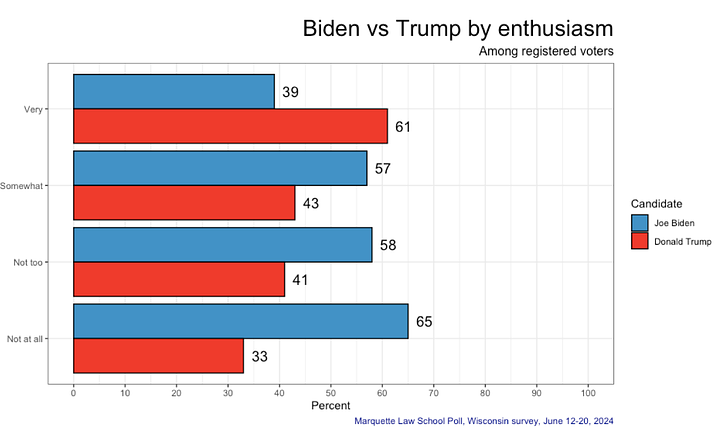
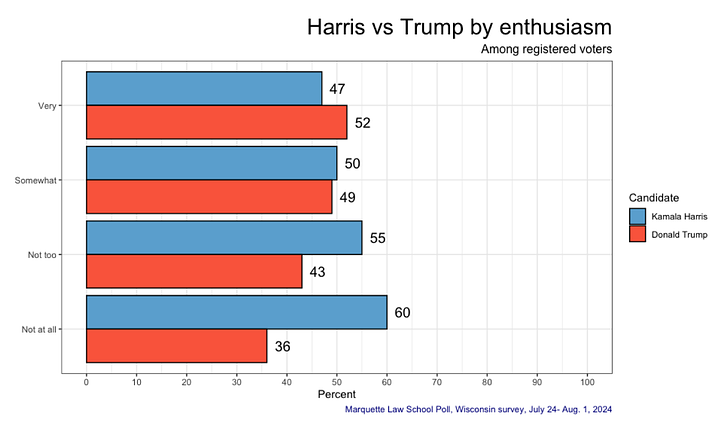
In previous breakdowns, we’d noted that “begrudging Biden voters” could be key to who wins this election, and if those unenthusiastic Biden supporters would show up on election day, the president could win again in Wisconsin. That’s another dynamic that is now gone.
This is a fresh new race. The enthusiasm has shifted significantly, and that’s at a time when Republicans would typically see a post-convention polling bump because of that very issue. Sticking with Biden would have made Trump the clear favorite to win in Wisconsin. Now, the race remains anyone’s ballgame.
And there’s now less than 90 days to go.
Being that this is the first poll with her at the top of the ticket for Democrats, let’s take a closer look at what the data says on Kamala Harris.
Like most politicians surveyed by Marquette, Harris has a net-negative favorability rating. She’s at 41% favorable to 53% unfavorable. Joe Biden has had very low approval and favorability ratings for much of his term, and that is also the case for Harris. This poll is in line with the other three favorability ratings polled since she’s been vice president with her favorable number being between 36% and 41%, and unfavorable being between 47% and 53%.
But she is doing quite a bit better than Biden on these marks. Biden’s favorability is a net minus-17 in this poll; Harris is at net minus-12. Among the youngest group of voters (18-29 year olds), Biden is a net minus-22; Harris a net minus-13.
But the depth of unfavorability here suggests Harris has a long way to go to win over voters in Wisconsin. Among independents, only 26% have a favorable opinion of the vice president, with 53% unfavorable, and 19% saying they haven’t heard enough to form an opinion.
Regionally, she’s at a significant net-positive in the Madison media market, but actually has a slight net-negative in Milwaukee, city and county. She’s essentially even with women on favorability and is a net minus-22 with men.
Given how much has changed in such a short amount of time, it’s reasonable to suggest these numbers will be on the move in the weeks and months to come. But to suggest Harris’ entry to the race gives Democrats an immediate advantage in Wisconsin would be wrong. It essentially pulls them from a distinct point of disadvantage to being basically even in the race. Which is to say, we’ve taken a long journey to be back where we started, with this race being a toss-up.
While the presidential race is back to being a toss-up, as most statewide races in Wisconsin are, there is a clear favorite in the race for Senate and her name is Tammy Baldwin.
We did a more in-depth breakdown of this race after the June poll, and nothing has gotten better for Republican challenger Eric Hovde. He’s still deep underwater on favorability. He’s still polling well behind Trump. And there are few signs that this campaign is getting closer.
Overall, this is quite the bad poll for Hovde. Early in the race, I made a comparison between him and Tim Michels — the Republican gubernatorial candidate who lost to Tony Evers in 2022 — and at this stage, if Hovde were pulling Michels’ favorability numbers, that would be outstanding news for Hovde. He’s nowhere close to where Michels was at this stage of the race. In August 2022, Michels was net-even on favorability. Hovde is net-minus 13 now, worse than any poll on Michels.
Hovde is at just 24% favorable to 37% unfavorable (and 38% who “haven’t heard enough” to form an opinion). With women, he’s at just 17% favorable to 38% unfavorable. He continues to have net-negative favorability ratings in every age group, with every income group, and now, at every education level. He’s a net minus-20 with independents. He has virtually no crossover appeal, polling with just a 1% favorability among Democrats. The only region where he has a net-positive favorability rating is in the Milwaukee suburbs and exurbs.
In the head-to-head matchup, where Baldwin is up 7%, she leads with every income group, has advantages with independents and moderates, and is even pulling some Republican voters. She’s out to a massive lead in the Madison media market — 78% to 22% — where Hovde is perhaps most well known given the location of one of his businesses.
If you’re in the Hovde camp, you’d be having a hard time finding positive takeaways from this poll. Perhaps given all the attention the presidential race has been getting in recent weeks, people have not yet focused on the Senate race in Wisconsin. But more attention has not helped Hovde in this race just yet, and given how frequently he’d been ripping Baldwin over her comments on Biden (made here at The Recombobulation Area!), his main line of criticism just evaporated.
Meanwhile, Baldwin appears to have navigated the tumult of the last few weeks well, and remains in a strong lead in her re-election campaign.
One of the things that poll director Charles Franklin noted in presenting the results of the new poll was the deep partisan divide and diminishing salience of immigration and border security.
Among Republicans, it ranks as the No. 2 most important issue in this election, behind only the economy. But it ranked as the top issue for 37% of GOP voters in April, and at just 26% now.
On the other side of the aisle, this barely rates as an issue at all, with just 1% of Democrats saying it’s the most important issue in this election, consistent from prior polling.
And with independents, the issue ranked second in April, with 23% ranking it as the top issue, and that’s down to 7% now, in a three-way tie for third along with abortion rights and Medicare and Social Security, behind the economy and health care.
There’s another question in this poll that is especially interesting, too. That April poll also included a question on deportation policies, and was showing that public opinion had shifted significantly to more closely align with Trump’s policies advocating for mass deportation, with a majority of voters saying they favor “deporting immigrants who are living in the United States illegally back to their home countries.”
This new poll included two ways of asking similar questions on deportation policies.
-
Question 1: “Do you favor or oppose deporting immigrants who are living in the United States illegally back to their home countries?”
-
Question 2: “Do you favor or oppose deporting immigrants who are living in the United States illegally back to their home countries even if they have lived here for a number of years, have jobs and no criminal record?
The two questions produced distinctly different results. On Question 1, only 11% “strongly oppose” deportation, but in Question 2, 30% of voters are opposed.
This is clearly an issue that Democrats are losing on, but I will continue to argue that it is not because people now overwhelmingly favor Republican policies on the issue, but because Democrats are doing an abysmal job articulating a clear position on immigration and border security. It’s not enough of a position to just be “not Donald Trump.” They have to actually stand for something at some point.
With Harris’ entry to the race, there’s an opportunity for Democrats to reset on this issue. They should look at these poll results as a potential opportunity to frame this conversation differently and talk about prioritizing immigration reform that includes a path to citizenship, in a contrast with the “Mass Deportations Now!” policies advocated for at the RNC.
Donald Trump’s selection of a running mate for the 2024 election is yet another new factor to enter into this campaign within the last month. (Why is this job open again? Oh. Right.) So, where is his starting point among Wisconsin voters?
On favorability, like most politicians, Vance is underwater, with 31% having a favorable opinion of him, and 41% unfavorable and 28% not having heard enough. Independent voters really do not have much of an opinion of Vance, with 55% saying they haven’t heard enough about the first-term senator from Ohio. With moderate voters, 43% don’t have an opinion of him. He seems to be best known among the strongest partisans, but isn’t as well known among those in the middle.
His highest favorability numbers come from born again Protestant voters, where he has a 55% favorable to 15% unfavorable rating. Outside of that, nothing really stands out all that significantly. There’s a whole lot of room for Vance to still be defined to a mass audience.
His first opportunity to do that, at the RNC, was not watched by a majority of voters. — 54% said they did not watch his speech.
The partisan divide on how Trump’s choice of Vance rates breaks down like this:
Republicans:
-
Excellent: 32%
-
Good: 45%
-
Fair: 7%
-
Poor: 8%
-
(Don’t Know: 6%)
Democrats:
-
Excellent: 4%
-
Good: 2%
-
Fair: 11%
-
Poor: 68%
-
(Don’t know: 16%)
One poll is not enough information to draw anything close to definitive conclusions about Vance. But there is a lot yet to be defined about Trump’s 2024 running mate on the national stage, and it will be very interesting to see how things break for him in the next poll.
Dan Shafer is a journalist from Milwaukee who writes and publishes The Recombobulation Area. He’s also written for The New York Times, The Daily Beast, Heartland Signal, Belt Magazine, WisPolitics, and Milwaukee Record. He previously worked at Seattle Magazine, Seattle Business Magazine, the Milwaukee Business Journal, Milwaukee Magazine, and BizTimes Milwaukee. He’s won 18 Milwaukee Press Club Excellence in Journalism Awards. He’s on Twitter at @DanRShafer.
Subscribe to The Recombobulation newsletter here and follow us on Facebook and Instagram at @therecombobulationarea.
Already subscribe? Get a gift subscription for a friend.
Part of a group who might want to subscribe together? Get a group subscription for 30% off!
Follow Dan Shafer on Twitter at @DanRShafer.

